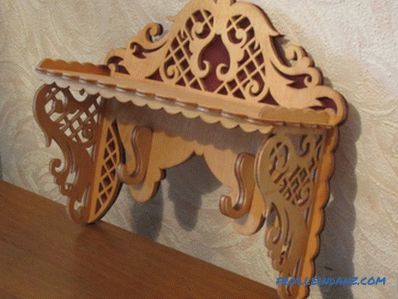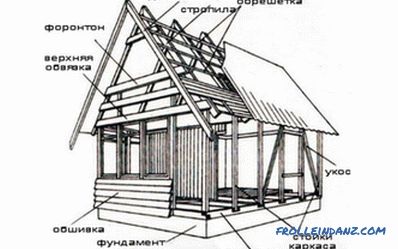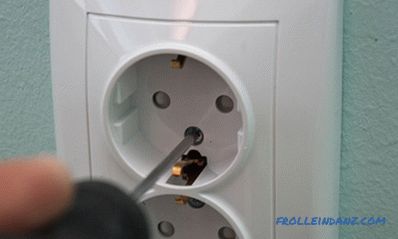It will still not be possible to assemble the entire system of domestic plumbing and heating only from plastic pipes, no matter how much you want it to. Both heating radiators and heated towel rails are still made of metal. Therefore, to prevent possible emergencies and leaking joints, you need to know how to connect plastic and metal pipes without welding.
Fittings for connecting pipes
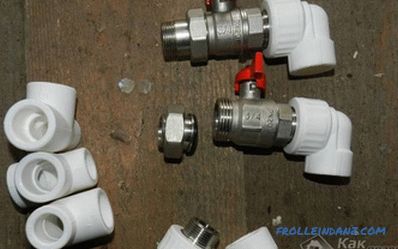 Fittings for connecting PVC and metal pipes
Fittings for connecting PVC and metal pipes
The times when it was almost impossible to get the necessary item in the stores, fortunately, are long gone. Therefore, combining metal and plastic, there is no need to "reinvent the wheel." Everything has long been invented, manufactured and put up for sale. You will only have to walk to the store, pay for the purchase (it will not cost you too much) and bring it home. The main thing is to buy exactly what you need and your metal pipe.
By the way, fittings (connections), designed specifically for the joints of metal and plastic pipes, are high-quality products that can serve you for a long time, provided that you can install them correctly.
Threaded connection
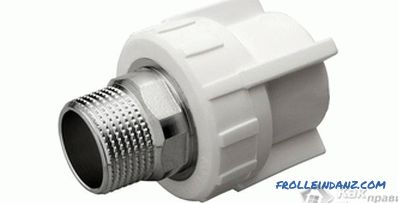 American fitting
American fitting
Since it is possible to connect plastic and metal pipes without welding in several ways, we will first consider the most popular of them.
So, suppose you have a metal pipe that has a thread at its end to attach to another pipe. And to address the issue of how to connect it with a plastic pipe that does not have a thread, you will have to go shopping again. The fitting that you will need to purchase is an “American”, which is a plastic sleeve, into which a threaded sleeve is fused from one end. Please note that "American" are available for different diameters of the connected pipes.
In this case, the connection of metal and plastic pipes is carried out as follows:
- Using a special tool - a "soldering iron" for plastic pipes - weld the "American" onto the pipe. Wait for the joint to cool down.
- Take the metal pipe, move it to the "American" from the other end and tighten its nut on it. To seal the joint, you can use a FUM tape.
- Turn on the water and make sure that the joint is not leaking. If a leak is found, turn off the water again, unscrew the nut, remove the old FUM tape and repeat the whole procedure again.
Threading
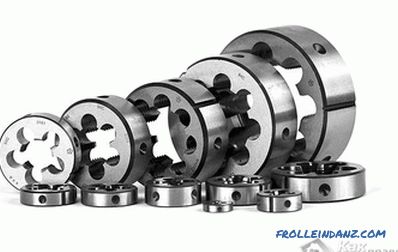 Dies for threading
Dies for threading
If there is no thread on your metal pipe (this happens if you decide to replace the water supply system in your house or apartment with a new one from plastic pipes), then you will have to cut this thread first. This can be done using a device called a "thread cutter" ("Lerka"). They are manual and electric. How you will use, depends only on its presence at you.
An electric thread cutter is not a cheap pleasure. Therefore, if you need it only for one or two pipes once a year, then hire it (rent) from someone, and not buy it. It is, however, much easier to use it than with a handheld man, since you don’t have to put almost any effort (with the exception of holding the pipe in its true position, if, for example, it comes out of the wall). The set of electric threading cutter includes several types of pipes, designed for different diameter of pipes.
If the distance from the pipe to the wall is too small, then you simply can’t put the thread cutter on the pipe. In addition, it quickly overheats, and you have to take breaks in the work, cutting threads on several pipes.
Regardless of which threading machine you use, there are rules that must be followed to get the desired result - a neat thread of the required length:
- Before you start, you must clean the pipe from the paint on it.
- If the outer surface of the pipe has metal leaks, they must be ground off.
- When using the handy handyman, try not to rush: first make a half turn first, then a quarter turn back, then try again until you cut the thread to the length you need.
Difficult option
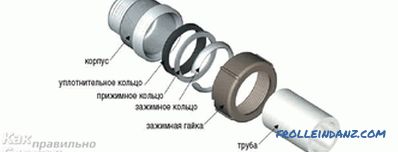 Clamping coupling
Clamping coupling
Pipe connection with using a thread ensures a sealed seam. However, there are situations when considering how to connect plastic and metal pipes without welding, you have to give up the simple way. This is usually due to the fact that the metal pipe is too small or close to the wall, and you cannot cut threads on it.
In this case, you will have to use a more complex option, although some of its masters consider it not very reliable.In fact, this is not the case, and if you did everything correctly, the connection of plastic and metal pipes will serve you for a long time.
To connect two pipes, you will need a Gebo Quick clamping coupling (manufactured by the Polish company):
- Clean the edge of the metal pipe from old paint.
- Take the clamping coupling in your hands and disassemble it into parts.
- Consistently slide the coupling parts onto the metal pipe. The distance from the sealing ring to the end of the pipe must be at least 10 mm.
- Gently insert the end of the metal pipe into the body of the coupling, then push all three rings towards it and tighten the nut.
- Since the coupling on the back side is threaded, now you can easily connect the metal pipe with an “American” soldered to a plastic pipe.
When choosing this connection option, do not forget that "Gebo Quick" couplings are available for different pipe diameters. And if the coupling you bought “sits” loosely on the pipe, then, most likely, you bought a coupling of the wrong diameter.
Well, to check how well you tightened the coupling on the pipe, gently pull it, holding the pipe with your second hand, so as not to accidentally pull it out of the wall - the coupling should not move along the pipe.
